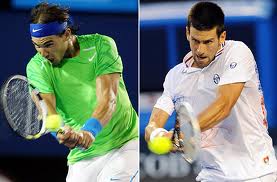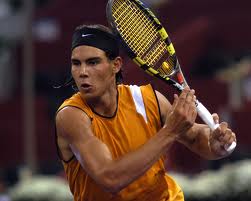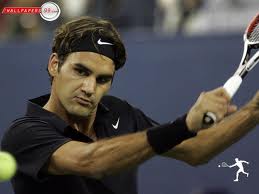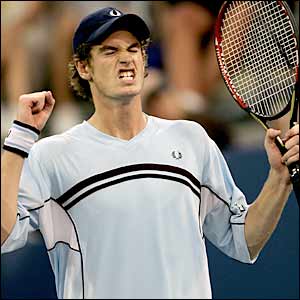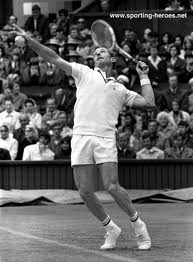Wimbledon 2012 is over and we aim to cover the major themes as discussed by the media using the data and science available to understand what happened. Many might have wondered what was going on with the tournament as it seemed there were two very different tournaments being played. One a grass court spectacle and the other an indoor tennis tournament favoring a different style player.
As we have pointed out in the past, the ATP tour rolled out the 32 player seeded draw to ensure there were fewer upsets so the top seeds could reach the finals of tournaments. Though Rafael Nadal was upset, 4 of the top 5 seeds reached the semifinals. The Wimbledon gods smiled on Federer where he faced no top 28 seeds until the semifinals. Then he played his next and final two matches indoors vs. Djokovic and a Palooka named Andy Murray in the finals. Though the Murray match was a close affair at first, the match was converted into an indoor venue midway ultimately changing the elements of the Championship. Federer is the first winner in Wimbledon history to face 3 players in a row (who he was 26-2 versus) over 30 years old at the tourney.
What to make of Nadal’s loss after 5 ESPN analysts picked him to win the tourney and we saw him as a heavy favorite? In the last 2 years, the majority of Nadal’s losses to players not named Federer and Djokovic have been to players 6’3″ or taller who tend to hit flat down the line passing shots off Nadal’s topspin forehand. These players, like Mardy Fish, Juan Martin Del Potro and Robin Soderling have massive firepower off both sides.
The 6’5″ Lukas Rosol played in the same vein in an out of his tree, partially indoor match firing 22 aces and facing only 4 break points in 25 service games. When he wasn’t firing aces, he was blasting huge groundstrokes hitting 65 winners including 14 winners off Nadal’s serve. Nadal may be the only person in history to play 51 games in a match with only 16 unforced errors (in 276 points) and lose.
Tied at 2 sets a piece with sunlight dimming, Nadal expected to complete his match the next day. However, the Wimbledon tournament officials determined to finish matches on schedule for television, decided to play the last set under lights with the rooftop closed.
When the rooftop is shut at Centre Court the tennis environment changes noticeably. Players have complained of getting a clammy feeling as all wind is eliminated and a centrally controlled environment of 74 F / 33 C degrees is implemented. Humidity condenses and impact of sunlight on the tourney goes away.
So for Nadal, a match that was being played at dusk suddenly became a mid afternoon match with indoor lighting meant to simulate mid-day. Moreover, the impact of his slower spin shots which wreak havoc in outdoor conditions with wind and the “Magnus” effect are negated since there is no wind to vary the spin of the ball.
There hasn’t been a more terrifying set of circumstances against a Spaniard as Nadal faced in the fifth set since the Spanish Armada wrecked on the shores of Ireland. After 4 sets, Nadal had more aces than Rosol and trailed in winners by only 9 shots. In the 5th set, Rosol hit 33% of his aces with 7 to Nadal’s 3 getting in an incredible 19 of 23 first serves. When he wasn’t serving 5th set aces, Rosol hit 20 winners to Nadal’s 5 doubling his margin of winners in the match in one set alone. And just like that, Wimbledon became any man’s tournament.
The Indoor / Outdoor scenario played itself out time after time as Federer was blessed with an indoor semi-final against Djokovic. At the 2011 US Open final Federer and Djokovic were about the same in winners and aces with the decisive figure being unforced errors where Federer hit 59 vs Djokovic’s 35. At the 2011 Australian Open, Djokovic hit 10 more winners and 10 less unforced errors than Federer. But in mid 2012, an older Federer playing without interference from the elements hit only 10 unforced errors to Djokovic’s 21 over 4 sets while hitting more winners and aces.
In the final, the first two sets against Murray were a close affair as Murray has split 16 matches vs Federer evenly. But the match again turned dramatically when the roof was closed. In the first two sets, Murray held a slight edge in aces with Federer having a slight edge in winners. But Murray had a lopsided advantage in unforced errors hitting only 9 to Federer’s 24. After the roof was closed the match turned dramatically as Federer hit 32 winners in the last 2 sets and only 14 unforced errors. Pete Sampras looked down from the tennis pantheon and thought to himself “how many slams would I have won with a rooftop?”
The issues with Wimbledon’s rooftop are well known. In 2009 when the rooftop first premiered, Andy Murray slammed it for the impact on the game. He claimed which was later confirmed by an International Tennis Federation scientist that the grass became more slippery as the closed roof and artificial environment caused humidity to condense on the grass. In Murray’s first service game where he was broken in the third set of the final in 2012, he slipped full to the ground 3 times on different points he lost.
Other players describe the air under rooftop as treacle, slowing the ball down during play. The shot spot system has shown that serves can slow down as much as 5 mph indoors. from when the roof is not closed. Professor Steve Haake, of Sheffield Hallam University’s department of sports engineering, who is also a consultant to the International Tennis Federation says ‘We have conducted blind tests on top tennis players, and they are so sensitive they can tell immediately there has been even the smallest changes to their rackets and strings.’
The New York Times also sites that for the first time, night time matches are being played at Wimbledon, upsetting what players are used to from a scheduling perspective.
And what of Wimbledon itself. This was the oldest men’s round of 16 in history with the average age of competitors 27.8 years old. At the 2010 Australian Open there was a 21 year old breakout talent, Marin Cilic, who made it to the men’s semifinal. At this year’s Wimbledon, 2.5 years later, the youngest person in the men’s round of 16 was again Marin Cilic. Wimbledon who has had breakout titlists under 22 such as John McEnroe, Jimmy Connnors, Bjorn Borg, Boris Becker, Pete Sampras and Andre Agassi has not had a 21 and under winner since Roger Federer in 2003. As John McEnroe says in an ESPN on Novak Djokovic, and is quoted in the blog, tennishasasteroidsproblem, “The level of play is mind-boggling,” says John McEnroe, commentating for NBC during a recent match. “I’m still trying to figure out how these guys do it.”
Surprising as in every other sport in the world, besides cycling, career longevity is declining. Tennis oldsters are hanging onto the top 10 like some sort of characters from “Interview With a Vampire”.
Meanwhile, the US has little new tennis talent. Donald Young continues his downward spiral. Ryan Harrison exited in the second round like last year. John Isner also exited early. No Americans under 24 moved up in the top 100 as a result of the tourney.
And tennis ratings are at there lowest point ever as the Federer / Nadal era has brought such decline in the sport that Wimbledon broadcasts are no longer available on network television. Feeding the tennis world the same matches over and over in finals over a 10 year span has left fans to say, “I’ll watch it when something is different” Tennis has entered the last tier of sports viewing and what happens when Federer and Nadal retire?















